I write some code for visualization of board and I have problem with initialization. I want generate view filled with board from the start to end (is it is shown on 3rd image). I try use many Qt5 methods but without results (I am beginner in Qt5). View looks perfect after first resize.
I have no idea what I am doing wrong with this initialization.
Just after .show():
After focus lost (I switch to write this question):
After resize it become as should look like/what I want to achieve:

How to fix this code to make it working form initialization - I am level 1 in Qt5 (beginner) and level 7 in programming. Maybe it need very simple change.
Here is working code Python 3.8/Qt5:
import logging
import sys
import typing
from PyQt5 import QtCore, QtGui
from PyQt5.QtCore import QSize, QPoint, Qt, QRect, QMargins
from PyQt5.QtGui import QFont, QPaintEvent, QPainter, QBrush, QColor, QPen
from PyQt5.QtWidgets import QApplication, QWidget, QGridLayout, QSizePolicy, QVBoxLayout, QHBoxLayout, QGraphicsWidget, \
QGraphicsScene, QGraphicsView, QGraphicsGridLayout, QStyleOptionGraphicsItem, QGraphicsSceneMouseEvent
class Application(QApplication):
pass
class SquareWidget(QGraphicsWidget):
def __init__(self, color):
super().__init__()
if color:
self.color = QtCore.Qt.white
else:
self.color = QtCore.Qt.black
def paint(self, painter: QtGui.QPainter, option: QStyleOptionGraphicsItem, widget: typing.Optional[QWidget] = ...) -> None:
painter.fillRect(option.rect, self.color)
class BoardContainer(QGraphicsWidget):
def __init__(self):
super().__init__()
logging.debug('size is %s for %s.', self.size(), self.__class__.__name__)
grid = QGraphicsGridLayout()
grid.setSpacing(0)
grid.setContentsMargins(0, 0, 0, 0)
self.setLayout(grid)
for row in range(8):
for column in range(8):
square_widget = SquareWidget((row + column) % 2)
grid.addItem(square_widget, row, column)
class BoardScene(QGraphicsScene):
def __init__(self):
super().__init__()
self.board_container = board_container = BoardContainer()
self.addItem(board_container)
class BoardView(QGraphicsView):
def __init__(self):
super().__init__()
logging.debug('size is %s for %s.', self.size(), self.__class__.__name__)
scene = BoardScene()
self.setScene(scene)
# no frame
self.setFrameShape(0)
# transparent background
# self.setStyleSheet('QGraphicsView {background: transparent;}')
self.setHorizontalScrollBarPolicy(Qt.ScrollBarAlwaysOff)
self.setVerticalScrollBarPolicy(Qt.ScrollBarAlwaysOff)
def resizeEvent(self, event: QtGui.QResizeEvent) -> None:
super().resizeEvent(event)
self.fitInView(self.scene().board_container, Qt.KeepAspectRatio)
class BoardWidget(QWidget):
def __init__(self):
super().__init__()
logging.debug('size is %s for %s.', self.size(), self.__class__.__name__)
grid = QGridLayout()
board_view = BoardView()
grid.addWidget(board_view, 0, 0)
self.setLayout(grid)
def main():
# show exceptions
def excepthook(cls, exception, traceback):
sys.__excepthook__(cls, exception, traceback)
sys.excepthook = excepthook
logging.basicConfig(level=logging.DEBUG)
app = Application(sys.argv)
app.setAttribute(QtCore.Qt.AA_EnableHighDpiScaling, True)
default_font = QFont()
default_font.setPointSize(12)
app.setFont(default_font)
board_widget = BoardWidget()
board_widget.setMinimumSize(640, 640)
board_widget.show()
sys.exit(app.exec())
if __name__ == '__main__':
main()


